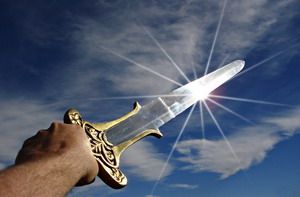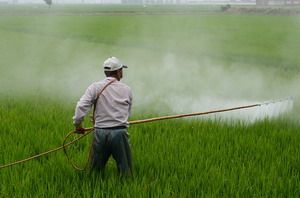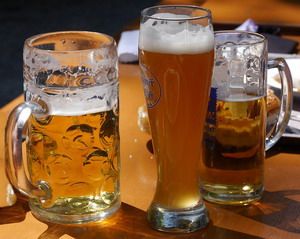I was researching the impact of sugar on the body when I came across an article that blew me away. It was a study published in the Endocrine Society journal on the impact of sugar on male testosterone levels. Currently testosterone levels are typically tested in the morning when levels are the highest with a blood draw. But there is no standard that says to do this test as a fasting test. The study was to see if this mattered. 
The shocking result was that sugar and carbs eaten before the blood draw lowered testosterone levels by 25%. What is more, this lowering effect was still present two hours later. This wastrue even in healthy men with no blood sugar problems. Upon reflection I saw that this fit with what I had learned in college about how the Roman Empire quartered and fed their soldiers. In the capital and during peacetime the soldiers were “paid” with a daily 5 pound loaf of bread, which they ate and also used as tender for other things in the marketplace. The soldiers were only fed meat just prior to battle. The meat
 was known to build up their aggression, while the bread was known to pacify them.
was known to build up their aggression, while the bread was known to pacify them.
Testosterone is one of those basic hormones critical to feeling good. It is not only responsible for building muscle and bone, but for the production of the feel good neurotransmitter dopamine. This is the basic excitement/pleasure brain chemical. Both men and women produce testosterone, but men produce more. That extra helps men grow more hair and macho attitudes. Low levels leave you feeling weak and tired all the time. Deficiency also makes you much more prone to obesity, diabetes, high blood pressure, and atherosclerosis. Since lack of energy is the biggest health complaint patients have, testosterone production is important to most everyone.
What else affects testosterone production?
Testosterone and estrogen balance against each other, so anything that increases estrogen levels lowers testosterone levels. This is a big problem in this modern world because we are surrounded by modern chemicals that look like estrogen to the body -–the so called xenoestrogens. The exposure to these chemicals has raised the average males estrogen levels by 40% over the last 20 years and lowered men’s testosterone levels by 25%.
Men normally lose 1-2% of their testosterone production each year after they turn 30, so that by age 55 they have half the testosterone they had when they were young. Dropping those levels by another 25% at every age explains why so many men feel flabby and tired by the time middle age rolls around.
each year after they turn 30, so that by age 55 they have half the testosterone they had when they were young. Dropping those levels by another 25% at every age explains why so many men feel flabby and tired by the time middle age rolls around.
A couple months ago I was reviewing the application protocols of a progesterone product for women to help with menopause. The majority of the booklet that accompanied this product was all about having to eliminate all sources of xenoestrogens from the patient’s life because it was the xenoestrogens that were driving the estrogen levels up so high and creating the symptoms so many women experience in perimenopause and menopause. Like testosterone, progesterone is also in balance with estrogen. And high estrogen levels and not enough progesterone typify early menopause and cause the unpleasant symptoms so many women experience.
So xenoestrogens are a major problem for both women and men. What are some of the common xenoestrogens?
 Pesticides, like glyphosate (Roundup), are powerful estrogen mimickers. This is one of the big problems with GMO foods. GMO exists because the genes that are inserted into plants allow them to tolerate glyphosate in higher and higher doses. The idea is to kill the weeds and not the crops. This unavoidably means higher doses of this pesticide as residues in our foods.
Pesticides, like glyphosate (Roundup), are powerful estrogen mimickers. This is one of the big problems with GMO foods. GMO exists because the genes that are inserted into plants allow them to tolerate glyphosate in higher and higher doses. The idea is to kill the weeds and not the crops. This unavoidably means higher doses of this pesticide as residues in our foods.
Phthalates, the chemicals used in plastics to make them both flexible and strong are everywhere in our environment and are also strong estrogenic chemicals. They are found in everything from the PVC pipes that carry the water in our houses to vinyl flooring, detergents, automotive plastics, soaps, shampoos, deodorants, fragrances, hair spray, nail polish, plastic bags, processed food packaging, garden hoses, inflatable toys, blood-storage bags, and intravenous medical tubing.
 Another plastic that has gotten a lot of press is Bisphenol-A (BPA). It is used in the lining of most every canned food and reusable water bottle. It leaches out into the foods we eat giving us a nice dose of estrogenic chemicals.
Another plastic that has gotten a lot of press is Bisphenol-A (BPA). It is used in the lining of most every canned food and reusable water bottle. It leaches out into the foods we eat giving us a nice dose of estrogenic chemicals.
Parabens and metalloestrogens are other estrogen mimickers found everywhere in the cosmetic and pharmaceutical industries. To check the toxicity of your favorite cosmetic and bath products go to the EWG Skin Deep database at www.ewg.org/skindeep. Much debate has been generated by the use of metalloestrogens in vaccines to increase their impact on the body.
 A really big problem today in our food chain is the use of estrogenic hormones used to increase the production of all kinds of meat from beef to fish. These hormones go directly from the animal or fish into our bloodstream and mess with our natural hormones. Examples are bovine growth hormones (rBGH or rBST) – found not only in meat, but also in milk. Even wild caught fish are filled with estrogens because of the huge amounts of estrogen-like chemicals dumped into our rivers as waste treated water. The fish are literally swimming in these chemicals.
A really big problem today in our food chain is the use of estrogenic hormones used to increase the production of all kinds of meat from beef to fish. These hormones go directly from the animal or fish into our bloodstream and mess with our natural hormones. Examples are bovine growth hormones (rBGH or rBST) – found not only in meat, but also in milk. Even wild caught fish are filled with estrogens because of the huge amounts of estrogen-like chemicals dumped into our rivers as waste treated water. The fish are literally swimming in these chemicals.
Another fun source of estrogens is PFOA’s – the stuff that makes things non-stick – like your frying pans. These chemicals break down and enter your foods. Of special concern is what happens when these things get overheated, like when your pan gets so hot food smokes. The PFOA’s vaporize into a toxic gas that is similar to the WWII nerve gas phosgene.
 Of special alarm to certain large portions of the population is the discovery that both beer and marijuana both drop your testosterone levels. The key ingredient in hops that helps beer be beer is very similar to the active ingredient in marijuana, and both pump up estrogen levels. Alcohol in any form inhibits your liver’s ability to break down and eliminate excess estrogens from your system.
Of special alarm to certain large portions of the population is the discovery that both beer and marijuana both drop your testosterone levels. The key ingredient in hops that helps beer be beer is very similar to the active ingredient in marijuana, and both pump up estrogen levels. Alcohol in any form inhibits your liver’s ability to break down and eliminate excess estrogens from your system.
Other toxins that tank testosterone levels are the popular food enhancer MSG and the water additive in our public water supplies, fluoride. The list of other endocrine disrupters is much longer than this, but you get the idea. Modern civilization and our addiction to chemical products that “make our life easier” are actually making us sick and tired all the time. Unfortunately there is no easy answer for this problem – no magic pill you can take that will reverse all the damage and make you feel good again. You can feel good again and rebuild your hormone levels, but you will have to eliminate the poisons from your life to do it.
 One last major cause of low testosterone is overproduction of cortisol in the body. Cortisol is produced in response to stress. Chronic cortisol excess suppresses our thyroid hormone production and destroys hippocampal cells in our brain that are responsible for our ability to remember stuff more than 10 minutes. There are many sources of chronic stress, some of which we can control and some of which we can’t. One common stress we don’t necessarily think about is the amount or kind of exercise we get, like aerobic exercise. Yes, aerobic exercise pumps up cortisol levels and lowers testosterone. As manly as we might think it is to run a marathon, the reality is it crashes our testosterone levels and shrinks our memory cells and energy hormones. Humans are better off doing brief spurts of aerobic activity, not long bouts of it.
One last major cause of low testosterone is overproduction of cortisol in the body. Cortisol is produced in response to stress. Chronic cortisol excess suppresses our thyroid hormone production and destroys hippocampal cells in our brain that are responsible for our ability to remember stuff more than 10 minutes. There are many sources of chronic stress, some of which we can control and some of which we can’t. One common stress we don’t necessarily think about is the amount or kind of exercise we get, like aerobic exercise. Yes, aerobic exercise pumps up cortisol levels and lowers testosterone. As manly as we might think it is to run a marathon, the reality is it crashes our testosterone levels and shrinks our memory cells and energy hormones. Humans are better off doing brief spurts of aerobic activity, not long bouts of it.
So what can you do to increase your testosterone levels? I have already mentioned eliminating the various toxic xenoestrogens from your environment. Obviously reducing your sugar and carbohydrate consumption will help while increasing your meat consumption bumps up testosterone. Weight training and interval training are both good boosters of testosterone production. But how about something much more fun and probably obvious – sex. Sexual activity, especially in the morning when testosterone production peaks anyway, is an excellent way to increase production.
 Since testosterone is linked to growth hormone, getting a good nights sleep is also vital for good hormone levels. Growth hormone is released after several hours of good sleep by the pituitary gland in the center of the brain.
Since testosterone is linked to growth hormone, getting a good nights sleep is also vital for good hormone levels. Growth hormone is released after several hours of good sleep by the pituitary gland in the center of the brain.
Keeping your liver in good shape by eating a natural diet, avoiding liver toxic substances like many pain killers and pharmaceuticals as well as alcohol, and doing regular detox cleanses will help your liver break down any excess estrogen in your system.
Lastly, since the active pleasure neurotransmitter, dopamine and testosterone, are directly related to each other, making sure that you have regular opportunities for positive excitement and pleasure are major contributors  to building your testosterone levels back up. Basically having fun keeps you feeling younger. So enjoy life, have fun, and build your hormone health at the same time.
to building your testosterone levels back up. Basically having fun keeps you feeling younger. So enjoy life, have fun, and build your hormone health at the same time.
